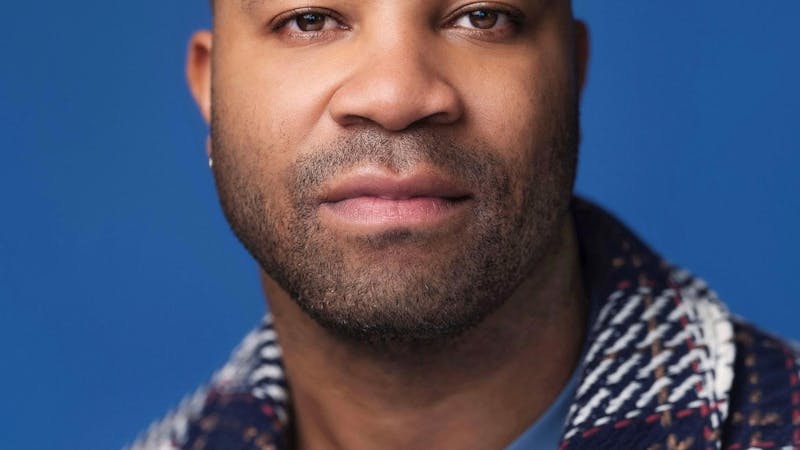Houston Jazz Collective’s rise from Valhalla to 713 Music Hall

Lily Remington / Thresher
Initially inspired by punk rock, the Houston Jazz Collective originated in the ‘70s from small concerts held at Valhalla and broadcast live on KTRU radio. The collective’s founders Joseph Peine and Tim Ruiz began playing shows at Rice with their friends from the Houston School for The Performing and Visual Arts. Many of their bandmates had strong connections with Rice.
“We had a band called Genetic Drift, and we were the first to play out of Valhalla,” Peine said. “We probably had seven kids whose parents were faculty at Rice.”
These shows eventually led to the founding of the Houston Jazz Collective, a 501(c) nonprofit led by board of directors Joseph Peine, Shelley Carrol, Andre Hayward, Tim Ruiz and Brian Perez. It was created to highlight Houston’s jazz legacy and help cultivate a new generation of jazz musicians.
The collective recently finished its most significant annual event, the Houston Blues and Jazz Festival, which brings many of the country’s leading jazz and blues musicians to Houston for two weekends of performances.
“We had always wanted to have a legitimate jazz festival in Houston that was carefully curated,” Peine said.
Award-winning musicians like jazz pianist James Francies, Tim Ruiz, a bassist in a five time Grammy-award winning Latin group Mononeon and guitarist Andy Timmons are just some of the acts who performed at venues across Houston, including 713 Music Hall and the Miller Outdoor Theatre. The collective prioritizes giving exposure to local musicians.
“We try to support local musicians, which isn’t hard to do because Houston musicians [and] Texan musicians are at the top of their form,” Peine said.
The collective also brought renowned audiovisual artist and synesthete Ben Heim to the Jazz Festival, who performed his collaborative work “Seeing Synesthesia, A Sound Painting” with Francies at 713 Music Hall. Francies’ musical credits include shows with Ms. Lauryn Hill and studio time with Chance the Rapper, Drake and Yebba. The pair used a computer and touchpad to draw and manipulate color and texture.
“I worked with James trying to represent to the audience the colors that he sees music as,” Heim said. “It really is more of an improvisational practice.”
The festival’s ability to attract so many talented artists is testament to both its high caliber and the support it receives from the Houston community.
For Peine and his friends, the Rice community was an incredible resource and opportunity, allowing them to grow their artistic talents and foster their skills. Today, they give back to the Houston community through their mission of showcasing excellent music, as well as an outreach initiative for local youth to gain exposure to the arts, particularly jazz music. According to Peine, Valhalla and KTRU also became a hub for local artists after the collective’s initial performances there.
“KTRU and Valhalla were at the heart of that scene and gave us an audience to perform to. It really helped our reach as young artists,” Peine said.
More from The Rice Thresher

Acting like an athlete: Rice basketball alum takes on Broadway
Underneath Chadd Alexander’s Broadway costume, there’s ankle tape and wrist braces — same protective gear he wore as a walk-on basketball player at Rice, though now he’s performing eight shows a week in the ensemble of “Harry Potter and the Cursed Child” instead of running conditioning drills in Tudor Fieldhouse.
“Love Island” Season 7: A Messy, Magnetic Reality Show
It was my first time watching “Love Island,” and I get it now. There's a cycle to this show: you swear you won't get sucked in, you dismiss it as background noise, and then, one week later, you're canceling plans just to hear a group of twenty-somethings debate the meaning of the word "exploring." The truth is, “Love Island” has plenty of flaws. It’s too long, too produced and too ridiculous, but I'll be the first to admit it: I'm already planning to watch next season.
Review: “F1: The Movie” puts pedal to the metal
Joseph Kosinski, Claudio Miranda and Jerry Bruckheimer — the trio behind “Top Gun: Maverick” — return to high-octane spectacle with “F1,” a sports drama that blends spectacle with surprising humanity. It’s loud, stylish and frequently overwhelming, but it’s also one of the most engaging racing movies in years.


Please note All comments are eligible for publication by The Rice Thresher.